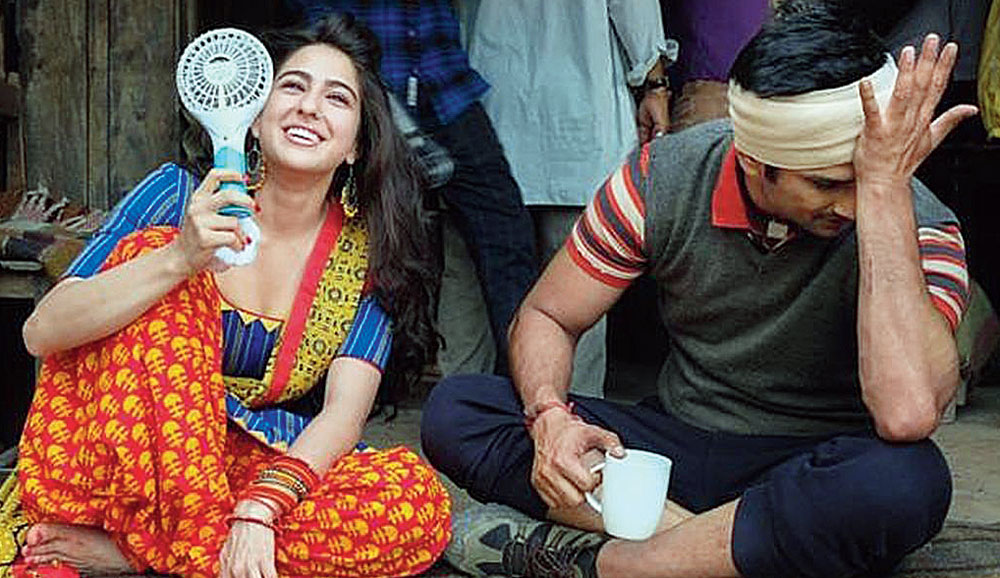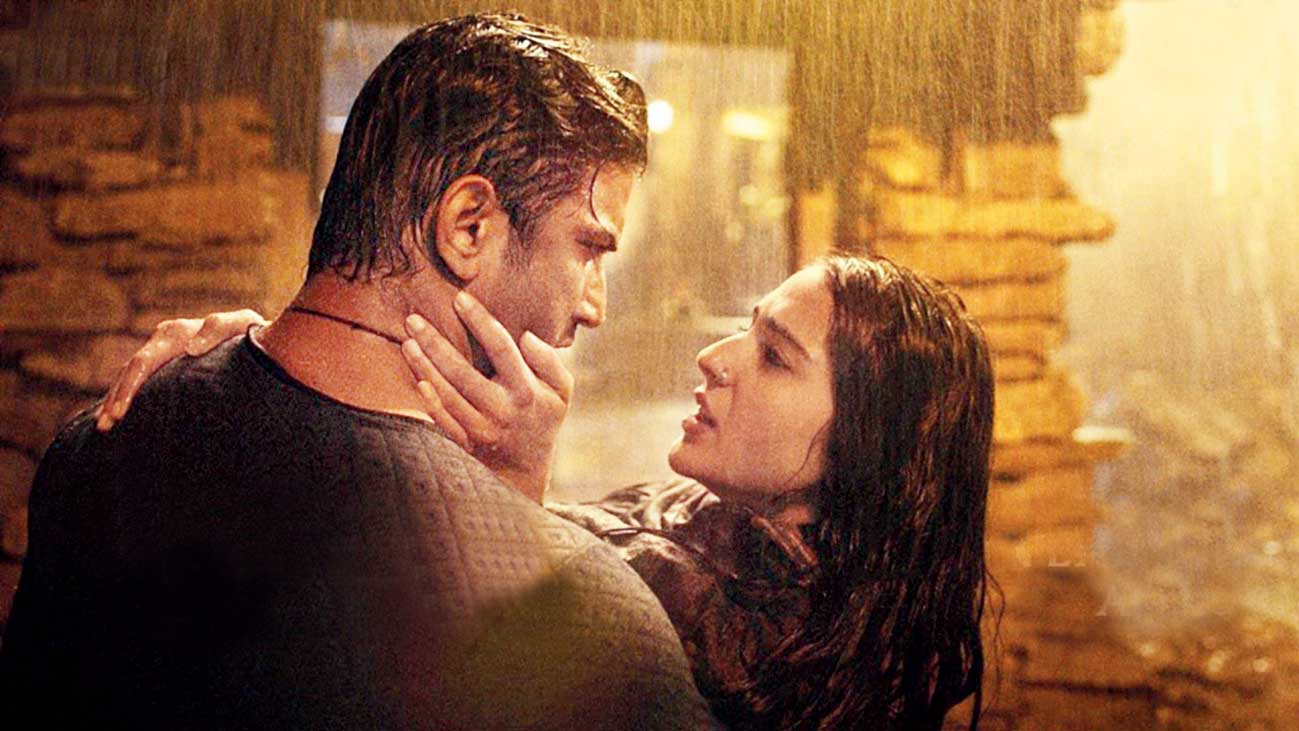Bubbly” is a much-abused word in Bollywood. Ever since a spunky small-town girl rolled her eyes and twitched her nose to declare “Main apni favourite hoon”, every Bolly heroine with pluck has wanted to be Geet from Jab We Met. So does debutante Sara Ali Khan — taking inspiration very close to home — in a large part of the two-hour runtime of Kedarnath.
Sara’s Mandakini aka Mukku is the fast-talking rebel at home who cheers raucously at India-Pakistan cricket matches, peppers her language with ma-behen cuss words, pursues the man she loves even when he evinces disinterest and proudly declares herself a tomboy while flicking her long locks. It’s a prototype that’s been done to death, but Sara — Saif Ali Khan and Amrita Singh’s daughter — brings freshness and flair to the part. The young actress does sombre and weepy pretty well and towards the latter half of Half Two, she comes into her own to deliver an assured debut.
Unlike Sara, Kedarnath never quite finds its groove. That’s primarily because it can’t decide what it wants to be. There’s romance, religious strife, talk of anti-commercialisation, community bonding and displacement, and elements of a disaster movie. None of these threads come together to form a cohesive film and though some moments and motifs work, the whole turns out to be less than the sum of its parts.
Kedarnath takes too long to establish the love story in the middle. Sara’s Mukku, the daughter of the local pandit, develops an interest in Mansoor (Sushant Singh Rajput), a porter who ferries pilgrims on his back to the Kedarnath shrine for a living. Director Abhishek Kapoor employs the standard Bolly tropes — rich girl-poor boy, she chirpy and he quiet, she rebellious and he withdrawn — in taking the romance further.
The story is further weighed down by the religious angle — she’s a Hindu, he’s a Muslim — and a sense of impending doom, none of which contributes substantially to the narrative.
There are some heart-touching moments — like the one on a rainy evening inside a cave where they exchange their life stories and kiss for the first time — but Kedarnath doesn’t let its lead pair develop a strong chemistry. The result is a love story that’s disjointed and doesn’t allow you to feel for the couple.
Kedarnath also suffers because of its ’90s-like treatment — from the girl braving the rain for hours in front of the boy’s house till his heart melts to the melodramatic mother, kerosene jerrycan and matchstick in hand, threatening her son to choose between “Ma ya pyaar”. This is 2018, or rather 2013 when Kedarnath is set, and these moments only bring on eye-rolls.
The flash floods, recreating the deluge that ravaged the hill state five years ago, almost feel like an afterthought. The disaster scenes work, though, with giant waves crashing down a mountain and leaving devastation in its wake. Tushar Kanti Ray scores with his camerawork, especially when he captures the ethereal beauty of the mountains. Amit Trivedi’s music is largely situational, yet Qaafirana stays with you.
Even at two hours, Kedarnath feels too long. It doesn’t help that Sushant, though earnest and a natural charmer, fails to bring a spark to his part. Your heart goes out to his Mansoor when he breaks into Lag jaa gale and then towards the heartbreaking climax, but Sushant has done better before.
The side players — Nitish Bharadwaj as Mukku’s strict father, Pooja Gor as her long-suffering sister and Nishant Dahiya as the shifty-eyed suitor — are well cast but operate strictly within stereotypes.
What makes Kedarnath a typical Bolly film? Mobile phones work without a glitch even as network towers come hurtling down in the floods. And here we are, battling call drops in sunny weather.













